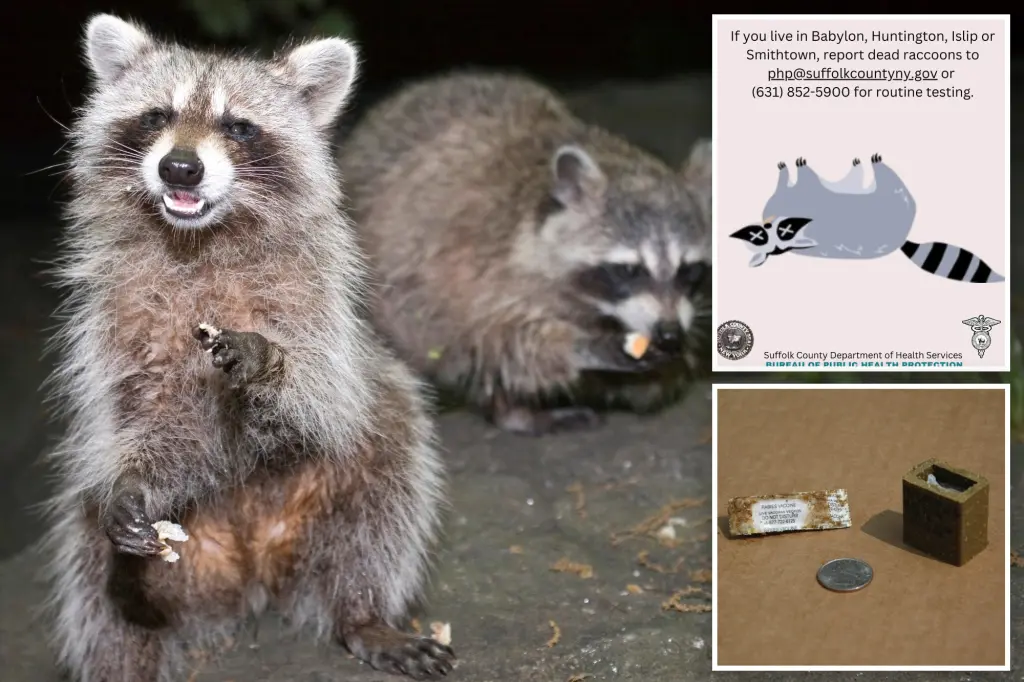
Rabies now an ‘imminent public health threat’ on Long Island, health…
How did your country report this? Share your view in the comments.
Diverging Reports Breakdown
Rabies now an ‘imminent public health threat’ on Long Island, health official points finger at NYC
There have been dozens of rabies cases from rabid raccoons and feral cats in the past year. Nassau County has had successful eradication since 2016, prior to the outbreak. Suffolk, which has had six recent cases near the counties’ shared border, was terrestrially free since 2009. The next significant step is an edible rabies vaccine bait drop, which the county previously distributed in the spring, is anticipated for the Fall when new litters are expected. The Massapequa and Farmingdale area, which are close to Suffolk’s six confirmed cases in Amityville, have had eight cumulative cases since July 2024. There were two cases in both North Baldwin and nearby Rockville Centre this July.“We are taking decisive action to safeguard our residents, their families, and their pets from this dangerous virus,” Nassau county Executive Bruce Blakeman said. “One ounce of prevention is worth a pound of cure,’’ Suffolk County Health Commissioner Dr. Irina Gelman added.
“The cases are widespread, and that’s part of this declaration — it’s the fact that we’re not seeing it just along the Queens-Nassau border,” county Health Commissioner Dr. Irina Gelman told The Post of the confirmed 22 rabid raccoons and three feral cats found in the past year.
Advertisement
“New York City has had a robust eradication program of its own… the funding for it dried up, they stopped [rabies] baiting along Nassau-Queens border, and unfortunately, some of the raccoons have made their way over, and, obviously, the rest is history.”
Nassau County has had successful eradication since 2016, prior to the outbreak, and Suffolk, which has had six recent cases near the counties’ shared border, was terrestrially free since 2009.
3 There have been dozens of rabies cases from rabid raccoons and feral cats in the past year. eddie toro â stock.adobe.com
Advertisement
“There may be more cases out in the wild — because we’ve confirmed 25, it’s indicative of wider spread,” she said.
“First of all, [there’s concern in] the sheer volume of cases that we have seen in one year, but also the rate of spread and also, the fact that it is feral domesticated animals.”
Those three feral cats represent an especially worrisome “a go-between” for wildlife and people, as well as their pets, according to Gelman. The cats were all found near Queens in 2024, with two sighted in Valley Stream and another in Cedarhurst.
3 A social media advisory was released affer the discovery of rabies cases in dead raccoons in North Amityville. Suffolk County Health
Advertisement
“When someone sees a cat in their backyard, it’s not necessarily as much of a reaction as seeing a wild animal,” she added, warning that children may also unknowingly play with a rabid cat and not think to tell their parents.
The nearly two dozen raccoons have been spotted widely across Nassau in areas including Roslyn Heights, Old Brookville, West Hempstead, Malverne, Rockville Center, North Baldwin, Wantagh and Plandome Manor.
Advertisement
The Massapequa and Farmingdale area, which are close to Suffolk’s six confirmed cases in Amityville, have had eight cumulative cases since July 2024. There were two confirmed cases in both North Baldwin and nearby Rockville Centre this July.
“We are taking decisive action to safeguard our residents, their families, and their pets from this dangerous virus,” Nassau County Executive Bruce Blakeman said.
Gelman added that Nassau has not reported any human transmission of the disease.
The next significant step is an edible rabies vaccine bait drop, which the county previously distributed in the spring, is anticipated for the Fall when new litters are expected.
Suffolk County will also be doing bait drops around that time in the western towns of Babylon, Islip, Huntington, and Smithtown.
“It’s [distributed] around residential areas, but where there are wildlife refuges, because obviously we want to address the raccoon population, not just toss out bait,” Gelman said, adding that Nassau and Suffolk are working in tandem to fight the spread.
“The bait is very fishy; it’s malodorous, so raccoons are really the ones that are mostly attracted to that scent. Dogs will mostly not eat it at all,” she added.
3 Nassau county has not reported any human transmission of the disease. USDA
Advertisement
Gelman added that raccoons being out in daylight are not a definitive sign of rabies, but may be the animals foraging for food.
A more clear-cut indicator of rabies is extremely erratic behavior.
For pet owners, the best thing to do is ensure their animal is vaccinated and keep it away from wildlife, according to the commissioner.
“The time for prevention is now,” she said. “One ounce of prevention is worth a pound of cure. That’s exactly what we’re trying to accomplish here.”
